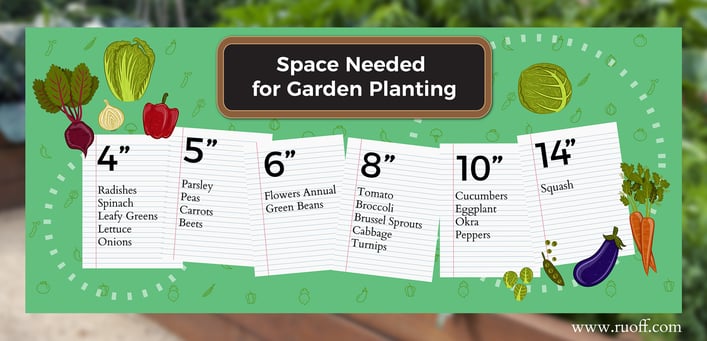Nancy Crowe
Nancy Crowe
It’s spring. You want to grow something. Anything. But maybe you haven’t done much gardening, you have only a deck or balcony to work with or you’re just not ready to “dig in” and commit to an in-ground flower or vegetable bed.
Fortunately, there are plenty of options for container gardening and deck planters. Here are just a few to inspire you:
The Grow Tub
Gardens Alive offers the Grow Tub for growing vegetables or annual flowers. Grow Tubs are made from
non-woven geotextiles that allow for air and water exchange, and they come in sizes ranging from 7 gallons to 20 gallons. According to Gardens Alive, these containers can grow everything from herbs and salad greens to peppers, carrots, tomatoes, squash, potatoes and more.
A video on the website shows a harvest of beautiful Purple Viking potatoes from a Grow Tub. While harvesting this way is easier and less potentially damaging to the potatoes than going the traditional shovel and pitchfork route, you do have to remember to put a tarp down before you get started … otherwise you’ll have a deck full of dirt. At the end of the season, you just remove the soil and planting material, fold the Grow Tub flat and store it.
The Earthbox
The EarthBox is a patented durable plastic container gardening system developed by commercial farmers. An EarthBox can sit in the yard or on a deck, porch or rooftop; you can even add casters if you need to be able to move it. A staking system for taller vegetables and flowers is available.
It’s self-watering, which means there’s a reservoir at the bottom that you fill through a tube. This helps prevent fungal disease — organisms such as powdery mildew growing on the plant and stealing its nutrients — because you’re getting the water right to the roots, not on the foliage. There’s an overflow hole to prevent overwatering, as well.
The standard EarthBox is 29 inches long, 11 inches high and 14 inches wide/deep, but you can also get an EarthBox Junior (23 inches long, 7.25 inches high and 9.5 inches wide/deep) for growing flowers, herbs or lettuces. The latest addition to the EarthBox product lineup is a squarish, higher (18 by 18 inches, 15.75 inches high) Root & Veg version that can accommodate root vegetables or something tall like a single tomato plant. All of them come in several colors.
Decorative Deck Planters
Browse any nursery or “big box” garden center and you’ll find an abundance of containers, from boxes you attach to a railing to cedar bins to imitation Grecian urns. Online, Gardener’s Supply Company offers a variety of stylish and functional patio planter choices. These range from solar illuminated planters in cheerful colors to the VegTrug Patio Garden, a waist-high, 70-inch-long wooden elevated bed.
What's in Your Garage?
Look around your garage, attic or shed. Old furniture, water troughs, recycling bins, storage totes, little red wagons, grills — these and countless others are all items with the potential for subsequent lives as garden containers. The Cottage Market has some good ideas, as does the DIY Network.
Pick a Suitable Size
Just about any plant can be grown in a container of the right size and depth. The bigger the plant, the bigger the container it will require, especially if it’s a root vegetable. When in doubt, go bigger.
Smaller varieties of the same crop lend themselves more readily to container gardening. For example, to grow the kind of tomatoes you can slice and put on sandwiches, you’ll need a container of about 5 gallons for one plant. Cherry or grape tomato plants give you that tomato taste in a smaller package, and you can probably get away with 2 to 3 gallons per plant. The same is true for peppers: the bell varieties will require a bigger home than their smaller (and hotter) jalapeño or Anaheim counterparts.
There is a great article about the minimum container sizes for plants. The inches in the picture determine how wide the diameter of the container you are planting in should be.

Lerner, B. Rosie. Container and Raised Bed Gardening. Department of Horticulture. Vegetables * HO-200-W, Purdue University Cooperative Extension Service, 2017, p. 2, West Lafayette, IN.
Things to Remember About Container Gardening
• Plants in containers of any kind are going to need more frequent watering.
• That water has to be able to run through the soil and drain out; if too much moisture accumulates in the soil, you risk root rot.
• Make sure whatever is underneath the container will not be damaged by water running out, and if it will, add a saucer, tray, tarp or other protection.
• Plants do better with at least six hours of sunlight each day.
Contain your garden dreams with style and efficiency, and watch for the next Garden Starter post on raised beds.
Disclaimer: The views and opinions expressed in this article are those of the authors and do not necessarily reflect the official policy or position of any agency of the U.S. government. Examples of analysis performed within this article are only examples. They should not be utilized in real-world analytic products as they are based only on very limited and dated open source information. Assumptions made within the analysis are not reflective of the position of any U.S. government entity.
.png?width=375&height=150&name=MicrosoftTeams-image%20(63).png)
